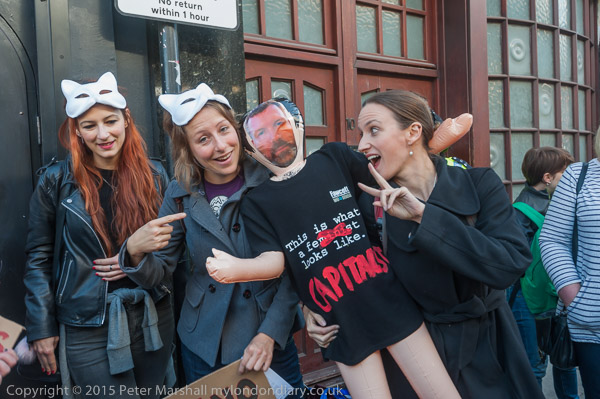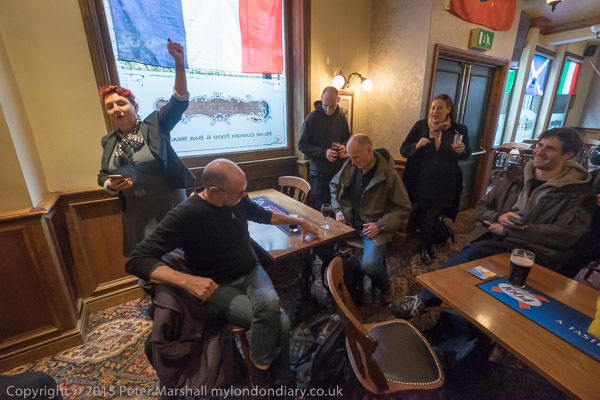
I find it hard to understand why anyone should want to visit the Ripper tourist attraction in East London, and it would seem that not many do. You have to have a particularly perverted lack of humanity to want to “have a selfie” with someone dressed in a Jack the Ripper costume “in his sitting room where he planned his horrific murders” or even worse “a picture with Jack in Mitre Square together with the body of Catherine Eddowes“. But such was the publicity for a Halloween event at this so-called museum.

“Museum” proprietor Mark Palmer-Edgecumbe complains to the police about Class War
Of course we can’t know what his sitting room looked like, or even if he had one, as his identity has never been fully established, with a whole ‘Ripperology’ industry which sometimes seems more designed to obscure than solve the mystery. The most convincing case is made out for Montague John Druitt, an exceptional sportsman from Winchester College and the son of a doctor, thought to have been suffering from an inherited mental illness and he appears to be the man the police (and possibly Druitt’s family) were convinced was the murderer, though they had no proof. But they did stop special vigilance patrols and give up on their investigations after his body was found in the Thames.

And that same face on the doll being savaged by the Sisters
Unsurprisingly the “museum’s” publicity tweet inflamed those who have been protesting against this sordid venue, and they – including organisers 4th Wave London Feminist Activists, the Sisters of Perpetual Resistance, Class War and others – came to protest, bringing with them a life-size inflatable doll wearing a feminist t-shirt and a face-mask of the “museum” proprietor Mark Palmer-Edgecumbe.

Kate Smurthwaite “Corpses ain’t Tourism
People, including comedian Kate Smurthwaite, posed for “selfies” with the doll, and it was stamped on by the Sisters of Perpetual Resistance and others. But I had to leave before the end of the protest.

It was a slightly difficult event to cover, as the protest mainly took place on the rather narrow pavement outside the “museum”, though later as it spilled out onto the road (and stopped the traffic) things became easier. Much of the time I was using the 16-35mm lens at its widest because it wasn’t possible to get any distance between myself and those I was photographing.
Continue reading Ripper Selfies

























